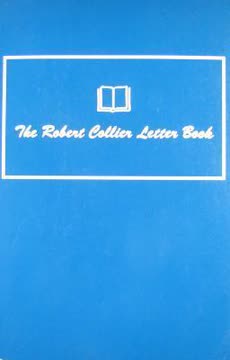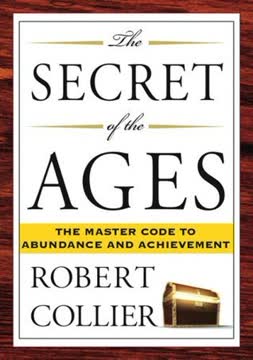Key Takeaways
1. Master Human Psychology First
Study your reader first—your product second.
Understand your audience. The fundamental principle of effective communication, whether in person or by mail, is to deeply understand your reader's existing thoughts, desires, and needs. Imagine them engrossed in their own concerns; your message must seamlessly "chime in" with their internal conversation, rather than rudely interrupting it. This empathetic approach ensures your message resonates immediately.
Connect to their desires. Every individual is constantly driven by conscious or unconscious desires. Your goal is to link what you offer to these inherent wants, making your proposition a step closer to their personal goals. Whether selling a raincoat or collecting a bill, the reader acts only if it brings them nearer to their heart's desire or prevents its loss.
Avoid self-centered pitches. Many letters fail because they focus on the seller's product or interests. Instead, successful letters identify the reader's dominant thoughts and present the product as a solution or enhancement to their life. This shift in perspective transforms a sales pitch into a valuable, relevant interaction.
2. Appeal to Emotion, Not Just Intellect
And when it is action you want, go after the emotions every time!
Emotion drives action. While logic and reason can convince the intellect, it is emotion that compels immediate action. A letter may be perfectly structured and logically sound, but if it fails to stir an urgent desire or a strong feeling in the reader, it will likely end up in the wastebasket.
Inspire urgent desire. The purpose of every business letter is to make the reader want to do what you're asking. This means tapping into their feelings, making them believe that the satisfaction gained from acting outweighs any effort or cost. The "Book of Etiquette" sold millions not through a wave of culture, but by arousing the fear of social embarrassment.
Provide a logical excuse. While the primary appeal should be emotional, it's crucial to also provide a rational justification for the purchase. This gives the reader a "logical excuse" they can use to explain their decision to friends or to salve their own conscience, reinforcing the emotional drive with intellectual validation.
3. Grab Attention with News and Curiosity
Rich man, poor man, beggar man, thief—all stop to read if you can put news interest into your letters.
News is universally appealing. Since the dawn of time, humanity has craved news—something fresh, exciting, and emotionally stirring. Injecting "news value" into your letter is a powerful way to capture attention, whether it's a startling discovery, a new development, or a unique twist on a familiar subject.
Pique curiosity immediately. Headlines and opening lines should function like newspaper headlines, designed to make the reader want to know more. Examples from successful campaigns include:
- "When the Rattlesnake Struck!" (O. Henry stories)
- "What is the Unpardonable Sin in all Nature?" (Wells' "Outline of History")
- "Will a Yellow King Rule the World?" (General interest)
Personalize the news. Once attention is captured, quickly connect the news to the reader's personal or business interests. This transforms general curiosity into focused engagement, making them feel the message is directly relevant to their life and concerns.
4. Paint Vivid Word Pictures
One clear picture built up in the reader's mind by your words is worth a thousand drawings, for the reader colors that picture with his own imagination, which is more potent than all the brushes of all the world's artists.
Visualize the proposition. The human mind thinks in pictures. To effectively sell, you must describe your offering in terms of things the reader already knows, building a clear, tangible image in their mind. This allows them to construct the product piece by piece, making it real and desirable.
Use familiar analogies. Connect your product to experiences, sensations, or objects that are universally understood. This creates an immediate foundation for understanding and emotional resonance. For example:
- Describing apples as "like those with which Eve tempted Adam."
- "Satisfying as sinking a ten-foot putt on a rough green."
- "Thick, creamy chocolate coatings that give you that 'moreish' feeling."
Stir emotions through storytelling. Infuse your descriptions with life, humor, or pathos. Tell the story behind the product, focusing on the human element. Whether it's the loving care in a picnic lunch or the ingenuity behind an invention, emotional narratives make descriptions memorable and compelling, transforming indifference into interest.
5. Leverage Core Human Motives
To get action, you need to arouse emotion on the part of your reader.
Identify primary motivators. Human actions are driven by six prime motives: love, gain, duty, pride, self-indulgence, and self-preservation. Successful letters identify the strongest motive relevant to the reader and stir it to overcome inertia or economic caution.
Show personal benefit. Always present your proposition from the reader's viewpoint, emphasizing what they stand to gain or lose. Will it make them richer, healthier, happier? Enhance their standing? Prevent loss of money or respect? This focus on personal benefit is far more effective than merely describing the product's features.
Combine motives for strength. While one motive might dominate, appealing to multiple emotions strengthens the call to action. For instance, selling a car might combine pride in its appearance with the gain of saving on repairs, and the duty/love for family safety, making the offer irresistible.
6. Build Trust with Proof and Guarantees
All the argument in the world is not equal to proof such as this: “You know Jim Jones, who lives over on Vesey Street, a few blocks from you. Here is what he says ... But we don't ask you to take his word for it. We don't ask you to believe even such men as this Senator, and that Congressman, and a nationally known banker or lawyer or whatnot. Try it for yourself and see!"
Proof overcomes skepticism. In a world saturated with claims of "best" or "cheapest," direct statements from the seller are often met with skepticism. The most powerful way to build confidence is through undeniable proof, especially from third parties or through direct experience.
Leverage testimonials and social proof. Statements from satisfied customers, particularly those known to the prospect, carry immense weight. The "John Jones of your town" approach, where a local buyer's positive experience is cited, is incredibly effective. This shifts the burden of belief from the seller to a trusted peer.
Offer risk-free trials. Backing up claims with a "free-examination, no-money-until-you-have-tried-it-for-a-week" guarantee demonstrates genuine confidence in the product. This removes financial risk for the buyer, making it easier for them to take the first step and experience the product's value firsthand.
7. Facilitate Immediate Action
Give him a push without seeming to do so.
Remove barriers to decision. Many prospects are "almost convinced" but hesitate at the final commitment. The key is to make the next step so easy and low-risk that moving forward feels simpler than holding back. Avoid asking for a definitive purchase decision upfront.
Break down the commitment. Instead of asking for a full purchase, ask for a small, preliminary action. For example:
- "Come and look at our beautiful new models" (for a car)
- "Just fill in your height, your weight and your collar size on the enclosed card, and we'll send you a Keepdry Coat in your exact size. Try it out. Wear it for a week. Then decide."
Leverage inertia. Once a customer takes a small, initial step, inertia often works in your favor. The effort of returning a product or reversing a minor commitment can be greater than simply accepting the main offer, leading to a completed sale.
8. Create Urgency with Scarcity and Deadlines
Make your reader feel that this is his last chance—keep your penalty dangling before his mind's eye, the money—saving lost, the opportunity missed.
Inspire fear of loss. Beyond desire, the fear of losing something valuable is a powerful motivator for immediate action. This "penalty" can be the loss of a bargain, a missed opportunity, or a negative consequence like damaged credit.
Be definite and specific. Vague threats or time limits are ineffective. State clearly what will be lost and by when. For example:
- "On the 1st of October, the rate... will go up to $1 a line. After the 30th, positively no orders will be accepted at less than $1 a line."
- "Only 46 sets left!"
- "This is your last chance to get Jack London free!"
Dictate the next step. Don't leave the reader to ponder. Clearly instruct them on what to do and how to do it. Make the action simple and direct, such as "Put your name on the enclosed card, stamp and mail," or "Pin your check or dollar bill to this letter and return in the enclosed envelope."
9. Test Everything, Adapt Constantly
What you learn today you must unlearn tomorrow. You have to keep trying—and testing—and then just when you reach the point where you can arise and state with authority: "This you can do, that you cannot," along comes some darned fool who knows none of the rules and sells a million on the very plan you said could not be worked!
Embrace continuous experimentation. The direct mail landscape is constantly changing, making continuous testing essential. What works today may not work tomorrow. A willingness to try anything once, even seemingly bizarre ideas, is crucial for discovering new, effective approaches.
Measure and analyze results. Every mailing should be a test. Track response rates, conversion rates, and profitability for different letters, offers, and lists. This data-driven approach allows you to identify what's working and discard what isn't, taking the guesswork out of advertising.
Learn from both successes and failures. Don't be afraid of "duds." Even unsuccessful tests provide valuable insights into customer reactions. The key is to analyze why something failed and use that knowledge to refine future campaigns, constantly seeking to improve.
10. Personalize and Simplify Your Offer
There is only one way you can sell a man by mail. That is to get him to act at once. Nine times out of ten, the deferred order is a lost order.
Make it personal. People respond better to messages that feel tailored to them. This can range from addressing them by name and profession to citing testimonials from individuals in their local community. The goal is to make the reader feel uniquely addressed and understood.
Focus on a single, clear offer. Avoid overwhelming the reader with too many choices in quantity, price, or features. Offering one article, one quality, one design, and one price simplifies the decision-making process and reduces hesitation.
- Offering a choice of two or more articles can cut orders in half.
- Even offering a choice of free premiums can reduce response rates.
Streamline the call to action. Every element of the letter should guide the reader towards a single, immediate action. Any complexity or ambiguity can lead to procrastination, which is often a lost sale.
11. The "First Sale" Unlocks Future Profits
When you have made one sale to a man, your hardest job is done. From then on, your real profits should begin.
Customer acquisition is an investment. The initial sale is often the most expensive, sometimes costing 10-50% of the selling price. However, once a customer has bought from you and been satisfied, their confidence is won, making subsequent sales significantly cheaper (5-10% selling cost).
Build a loyal customer base. Satisfied customers are your most valuable asset. They are more likely to trust future offers and purchase related products. This principle is why many successful mail-order businesses are willing to spend more on the first sale, knowing the long-term value of a repeat customer.
Strategize for repeat business. After the initial sale, actively cultivate these relationships with follow-up offers for related products. This "first olive" principle ensures that once the initial barrier of trust is overcome, a steady stream of profitable sales can follow, maximizing the lifetime value of each customer.
Last updated:
Review Summary
The Robert Collier Letter Book receives mostly positive reviews, with readers praising its timeless principles and abundant examples of effective sales letters. Many find it valuable for copywriting and marketing, despite its age. Critics note the book's repetitive nature and outdated examples, which can make for tedious reading. Some reviewers warn about pirated versions and recommend purchasing the authentic edition. The book's focus on human psychology and emotional appeal in advertising is highlighted as particularly insightful.
Similar Books
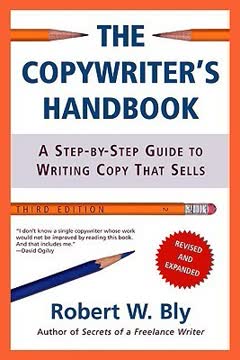
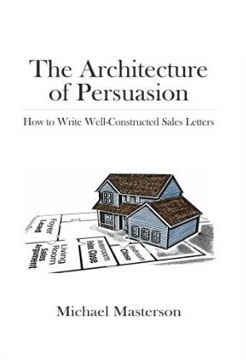

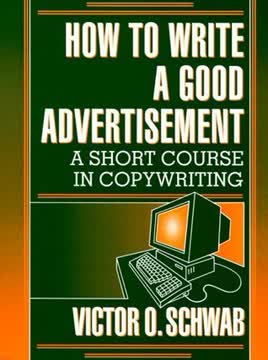
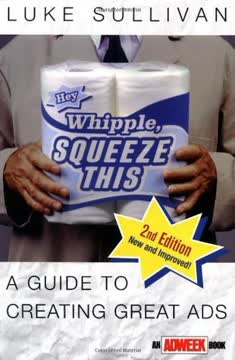

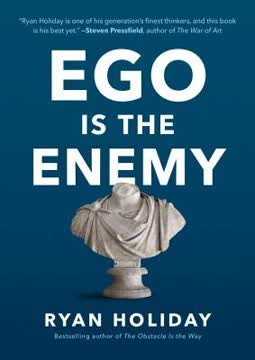
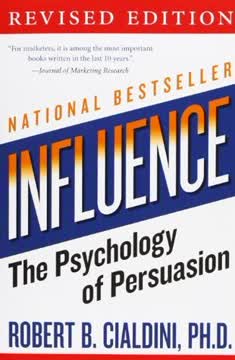
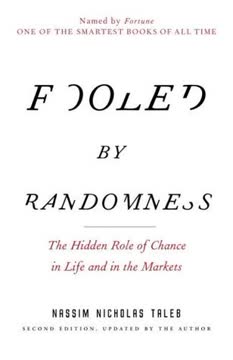
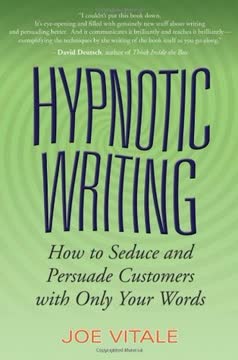
Download PDF
Download EPUB
.epub digital book format is ideal for reading ebooks on phones, tablets, and e-readers.
